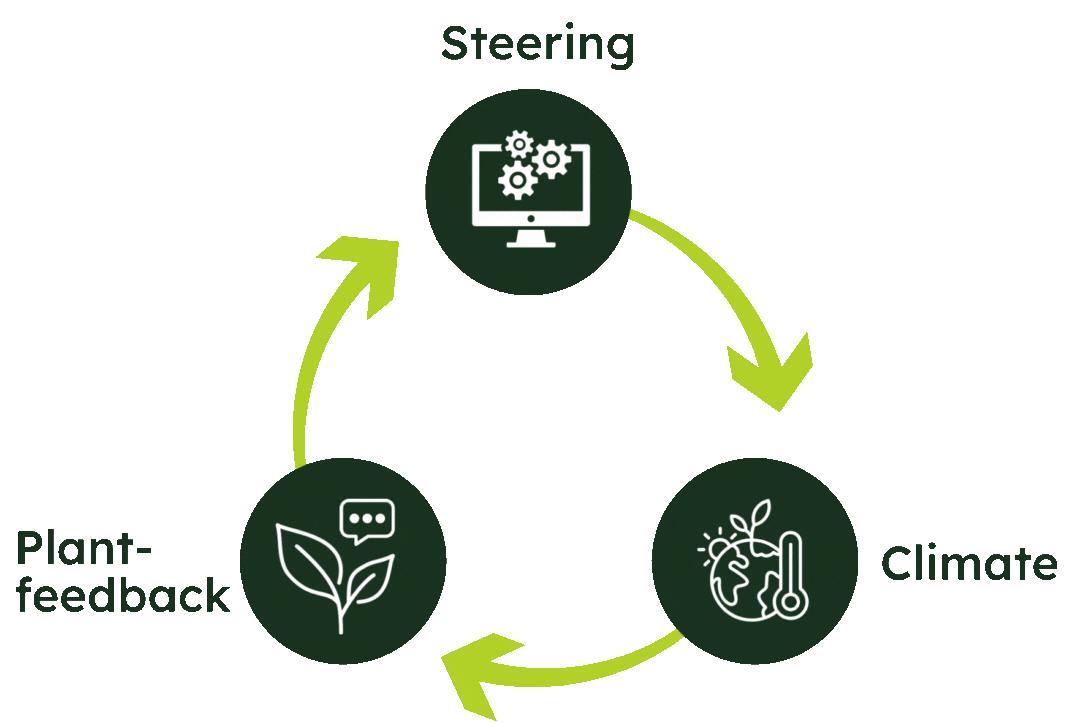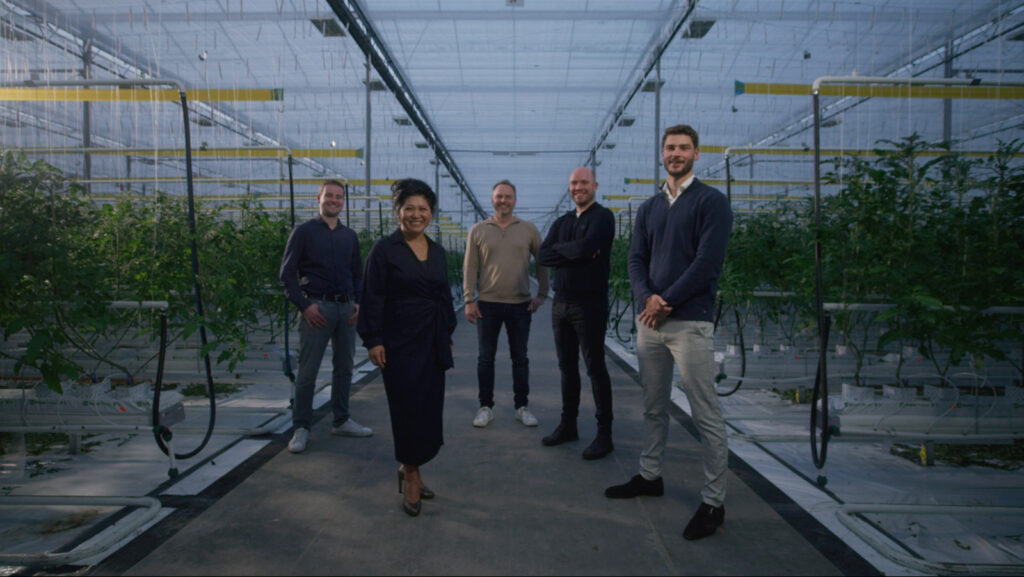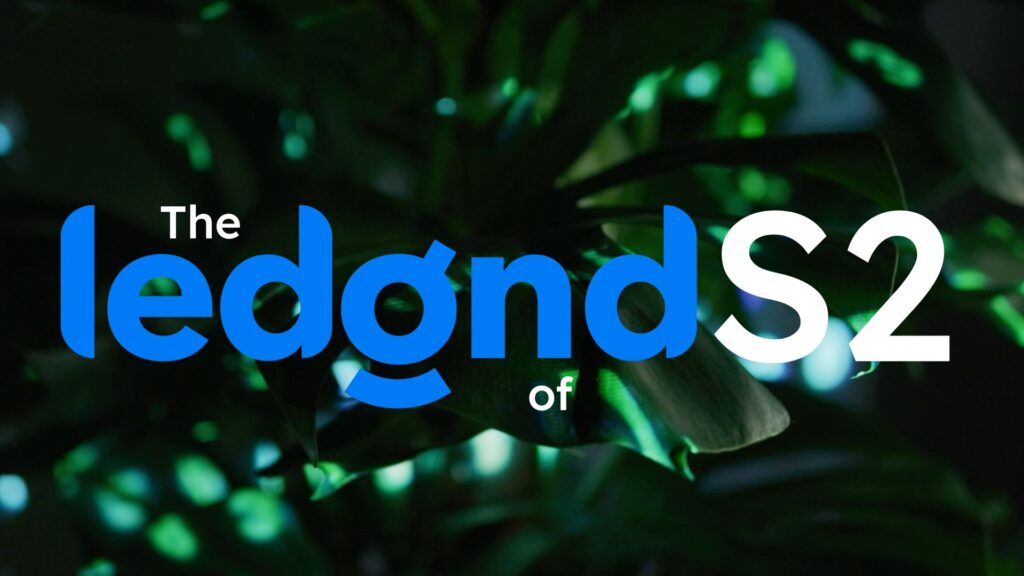The closed feedback loop in the greenhouse: what is it and what are its benefits?
In greenhouse horticulture, large amounts of data are collected. Sensors measure light, temperature, humidity and CO₂ levels. Growers are also increasingly using plant feedback systems. But one key question remains: what do we actually do with all that data? A lot of information is recorded, but it doesn’t automatically lead to action. This is where the principle of the closed feedback loop comes in. In this article, we explain what a closed feedback loop is, how it works in practice and what it can deliver for you as a grower.
What is a closed feedback loop?
A closed feedback loop is a cultivation approach in which you measure the microclimate in the greenhouse, observe how the crop responds, and then adjust your cultivation settings based on that plant response.
It is a continuous cycle of measuring, interpreting and steering, with the plant as the central reference point. No more assumptions or averages, but real-time feedback from the crop itself.
Why not rely on climate data alone?
Many growers steer based on climate data from the computer, such as temperature settings, humidity levels and light intensity. But the real question is how the plant actually experiences these conditions.
Two sections with identical settings can show completely different crop development. This is because the microclimate, the conditions directly around the plant, can vary significantly. These subtle differences only become visible when you use plant feedback sensors such as
-
Photosynthesis efficiency (PE): shows how effectively the plant converts light into energy
-
Leaf temperature: indicates evaporation, stress or heat accumulation
-
Light deviation: reveals a mismatch between light intensity and the plant’s ability to process it
This is how the closed feedback loop works in practice

Measuring the microclimate
You start by measuring environmental factors such as PAR light, temperature, CO₂ and humidity. This data gives you an overview of the conditions surrounding the crop.
Analysing plant feedback
Next, you observe how the plant responds. Does photosynthesis efficiency drop during a light peak? Does leaf temperature rise? Does stress increase under a combination of high radiation and low humidity? By combining these signals, you not only understand what is happening in the greenhouse, but also what impact it has on the crop.
Adjusting based on the plant’s response
If the plant shows signs of stress under high light levels, you can start shading earlier or adjust your lighting strategy. If the plant reacts to dry air, you might modify humidity levels or regulate evaporation. The plant tells you what it needs, and you respond based on its behaviour.
What does the closed feedback loop deliver?
A closed feedback loop leads to:
Healthier crops: Less stress means better photosynthesis, faster growth and a lower risk of damage.
Targeted control: You no longer act on instinct, but respond to what the plant is actually telling you.
Efficient energy use: By only intervening when the plant needs it, you avoid wasting light, heat or CO₂.
Higher yield and quality: You optimise the microclimate based on the plant’s real behaviour, not assumptions
MyLedgnd as the connecting link
With MyLedgnd, the closed feedback loop becomes practically applicable. The platform brings together microclimate data and plant feedback in clear dashboards. At a glance, you can see when light deviation increases, photosynthesis efficiency drops or leaf temperature spikes.
Conclusion
A closed feedback loop bridges the gap between measuring, understanding and taking action. It allows the crop to play an active role in your cultivation strategy, leading to healthier plants, better results and greater control. Want to learn more? Get in touch to schedule a no-obligation introduction!
New articles

How 2025 became the year of plant feedback, sustainability and collaboration
2025 was a year of contrasts for many growers: rising costs and stricter regulations, while at the same time more opportunities than ever to gain control of the crop using data. At Ledgnd, the year wa…

“From pioneering to professionalising”, Matthea Rijneker reflects on her first six months as CEO of Ledgnd
At Ledgnd, 2025 was a year of change. Not only within the MyLedgnd platform, but also within the organisation itself, which went through a clear strategic shift. Midway through the year, Matthea stepp…

Ledgnd launches season 2 of video series “The Ledgnd of”
Ledgnd has launched the second season of its video series “The Ledgnd of”. The series takes a closer look at the key concepts and innovations shaping modern greenhouse horticulture. In the new season,…
Read more

How 2025 became the year of plant feedback, sustainability and collaboration
2025 was a year of contrasts for many growers: rising costs and stricter regulations, while at the same time more opportunities than ever to gain control of the crop using data. At Ledgnd, the year wa…

“From pioneering to professionalising”, Matthea Rijneker reflects on her first six months as CEO of Ledgnd
At Ledgnd, 2025 was a year of change. Not only within the MyLedgnd platform, but also within the organisation itself, which went through a clear strategic shift. Midway through the year, Matthea stepp…

Ledgnd launches season 2 of video series “The Ledgnd of”
Ledgnd has launched the second season of its video series “The Ledgnd of”. The series takes a closer look at the key concepts and innovations shaping modern greenhouse horticulture. In the new season,…
Do you want to know more?
Interested in what Ledgnd can do for you? Leave your phone number, and we will contact you as soon as possible for a non-binding informational conversation

